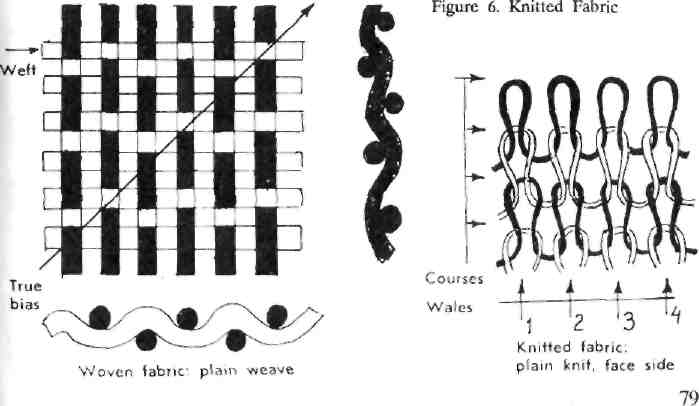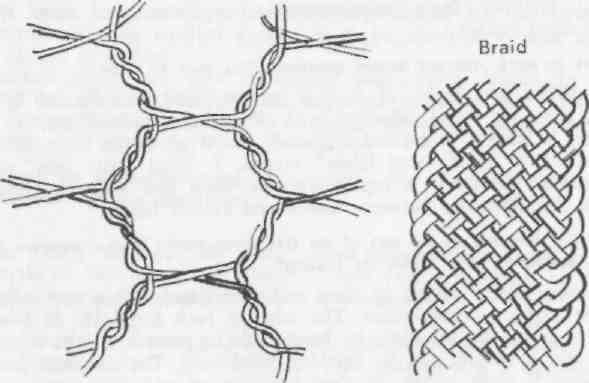
- •Методические рекомендации
- •Занятие 1
- •Раздел 5
- •Тема 5.1
- •5.1.1.Классификация волокон и тканей
- •Занятие 2
- •Раздел 5
- •Тема 5.1.
- •Использование тканей
- •Занятие 3
- •Раздел 5
- •Тема 5.2
- •5.2.1.Хлопок
- •Занятие 4
- •Раздел 5
- •Тема 5.2
- •Занятие 5
- •Раздел 5
- •Тема 5.2
- •5.2.3.Шерсть
- •Занятие 6
- •Раздел 5
- •Тема 5.2
- •5.2.4.Шелк
- •Занятие 7
- •Раздел 5
- •Тема 5.2
- •5.2.5.Искусственные волокна
Занятие 2
Раздел 5
Ткани и их использование
Тема 5.1.
Ткани
Использование тканей
Образовательная цель
Повторение правил использования выражения «to be going to»
Развивающая цель
Изучение и использование лексики по теме «Использование тканей»
Воспитательная цель
Осознание необходимости изучения профессиональной лексики для дальнейшей успешной работы по специальности
Порядок выполнения заданий
1. Повторение правил использования выражений «To be going to…»
2. Выполнение упражнения для контроля усвоения материала словаря терминов (А.1.)
3. Выполнение упражнений на поиск информации в тексте (В.1. – В.3.)
4. Выполнение задания на понимание текста (С.1.)
5. Выполнение задания для самостоятельной работы (А.4.)
А.1. Перевести на английский язык
волокно, текстильная нить, волокна ограниченной длины, нити значительной длины,
тканые и нетканые материалы, характер лицевой поверхности ткани,
полотняное переплетение, переплетение нитей основы и утка, по косой,
трикотажные полотна, трикотажные изделия и белье
В.1. Прочитать текст и выполнить задание
TEXT FOUR
A. This fabric is stretchy and comfortable to wear. The fabric is formed by a series of interlocking loops. Weft-knitted fabric has the loops running crosswise and the stretch is greater across the fabric than down it. Warp-knitted fabric is made by forming the loops lengthwise and is more stable and durable than the weft-knitted type.
B. This is the most usual method of making fabric, in which two sets of yarns (the warp and the weft) are woven together to produce a fabric. The warp threads run lengthwise down the fabric and they are crossed at right angles by the weft threads. The weave can be either plain or patterned according to the arrangement of the threads.
С This is produced by machine to imitate a fabric which was originally hand made. The fabric has geometrically shaped holes outlined by yarn. The yarns are held together by knots where they intersect.
D. The fabric is made from short lengths of fibres, usually wool or cotton, which are compressed and bonded together by heat and moisture. The fabric has no grain and is quite weak in wear. Wool felt will shrink if it is washed.
Read the text. Match each of the four headings below with its parts, describing different methods of making fabric:
1. Weaving
2. Knitting
3. Felting
4. Netting.
В.2. Прочитать текст
WOVEN AND KNITTED FABRICS
In their simple form these consist of two series of threads, warp and weft, interlaced at right angles to each other. The warp threads run the length of the fabric and the weft threads run across the width of the fabric.
The edge at each long side of a woven fabric is called the selvedge and it is commonly of a different construction or appearance, to the rest of the fabric because its function is not only to provide a firm neat edge finish to the fabric for the sake (для, ради) of appearance, but also to provide a secure grip for finishing machinery.
Figure 5 shows plain weave, which is the simplest form of interlacing. The section drawings at the side and the bottom of the plan show that warp and weft interlace with each other in a similar manner. If the threads are closely spaced it can be seen that this form of interlacing gives a very tight structure because the alternate interfacings give no room for sideways movement of the threads. The draping properties of such a structure would depend entirely on the flexibility of the fibres and yarns.
If tension is exerted diagonally much more movement is obtained because the force is not now directed along a yarn direction but is pulling across both series of threads causing a 'scissor' action. This diagonal direction is known as BIAS. True bias is an angle of 45°, i.e. exactly between warp and weft.
Figure 5. Woven Fabric

In using a woven fabric for clothing, due regard must be paid to the GRAIN of the fabric. The grain is represented by warp and weft. If the fabric is true, the warp runs straight lengthways and the weft runs across the fabric at 90° to the warp. Garments are usually made up so that the warp runs vertically down the garment as it is worn and the weft horizontally across it. Care must be taken to ensure firstly that the fabric is 'true' and then that the pattern pieces are correctly related to grain.
Knitted fabrics consist of a structure formed by interlocking loops of yarn. Figure 6 shows a simple weft-knitted structure. This term is used because the yarn is fed (подается) horizontally to form rows of loops which are individually locked vertically with the corresponding loop in the next horizontal row. This is the type of knitting which can be produced by hand using two knitting 'needles' and one ball of yarn.
The stability of a simple knitted fabric is much less than that of an ordinary woven fabric because any tension exerted on it will never be along the line of a yarn, but will distort (деформировать) the loop structure so that the fabric can be stretched in any direction.
This simple structure can also be unravelled very easily from the top downwards, and if the yarn forming a loop is broken it immediately releases loops so that a 'ladder' quickly forms which will widen and lengthen under tension.
The instability of simple types of knitted fabric was a limiting factor in their use for garments. At one time hosiery and underwear formed the main bulk (большую часть) of garments made from this type of fabric because shapes could be kept simple and the stretch of the knitted structure enabled a close fit to be obtained without complicated cutting or styling.
Knitted fabrics are now competing with woven fabrics in many clothing uses due to the fact that improved machines and techniques have produced knitted fabrics in complex structures which in some cases are equal to woven fabrics in stability.
В.3. Ответить на вопросы
1. What two series of threads woven fabrics consist of in their simple form?
2. What selvedge is?
3. What its functions are?
4. What happens if tension is exerted diagonally?
5. What is the diagonal direction called?
6. What "true fabric" means?
7. What "true bias" means?
8. Whether the grain is represented by warp and weft?
9. What is the difference between woven and knitted fabrics?
А.4. Задание для самостоятельной работы
Прочитать текст
A. LACE AND NET FABRICS.
The manufacture of these was formerly a hand technique but they are now mostly machine made. The basic net structure is shown in figure and two basic structural points are important at this stage. The first is that in this form of fabric yarns are actually twisted round each other and do not form straight lines. The second point is that lace and net are 'open' type structures which tend to be dimensionally unstable if tension is exerted on them.
In this respect these fabrics behave similarly to simple knitted fabrics, but whereas compound knitted structures can be made close, compact and stable, lace structures must remain relatively open to preserve their character. For this reason lace is mostly used for decoration in the form of edgings and insets.

B. BRAIDED FABRICS.
These are produced by interlacing yarns diagonally in a form of "plaiting". Braid is used for decorations. The diagonal course of the yarns normally makes braid easily extended in the length direction with a corresponding contraction in width. Woven "braid" is often used for stabilizing edges of knitted garments
С FELT.
Felt has been used by man for centuries and its manufacture is made possible by the fact that wool, and some other animal fibres, possess a natural tendency to felt or mat together under the influence of heat, moisture and mechanical pressure. A fabric produced in this way is entirely without grain because the flat webs of fibres are non-directional, i.e. the fibres point in all directions.
If felt is to be strong and stable the fibres must be so consolidated that the material is stiff and heavy with very little draping property.
If felt is made soft and supple its properties of tensile strength, resistance to abrasion and distortion are too low to be of practical value for normal garment use.
The main apparel use of felt is in the manufacture of hats where its capacity to be shaped by heat and moisture can be exploited.
D. BONDED FIBRE FABRICS.
The development of bonded fibre fabrics is comparatively recent and is based on the use of fibres other than wool, in fact man-made fibres are the principal fibres used for these fabrics. As they do not possess an inherent felting property some form of chemical bonding is necessary.
For general fabric use bonded fibre fabrics still suffer from the same disadvantages as felt with the result that they are not suitable for "top" fabrics in clothing. However, they have found considerable use as interlinings and this method of manufacture can produce a wider range of materials at a much lower price than is possible with felt.
Выявить незнакомые термины и добавить их в словарь терминов
Словарь терминов к занятию 2
behave v вести себя, поступать; majority n большинство;
crisp а твердый, жесткий
entirely adv 1. всецело, вполне, полностью; 2. исключительно, единственно, только
hand n приятность (на ощупь); приблизительно эквивалентно по значению термину «туше»;
interlining п утепляющий подкладочный материал;
glazed cotton хлопчатобумажная ткань с блестящей поверхностью
ply п слой; three-ply трехслойный;
rough а грубый, шероховатый; coarse грубый;
sheer а легкий, прозрачный (о тканях);
suffer (from) v страдать, испытывать;
supple а гибкий, мягкий;
visibility n зд. зрительное восприятие;
web n 1. пучок, 2. ткань, трикотажное полотно, тесьма; 3. сплетение, паутина;
